If you’ve seen Bandersnatch — the Black Mirror interactive film that Netflix released as a surprise just after Christmas — and wondered whether it was a confusing thing to make, I’ll just cut to the chase: It was.
Fionn Whitehead (who plays Stefan): Often, no one would know what was going on and where we were, to the point where we would be setting up for a shot and then everyone would be slightly unsure of what scene we were about to shoot or what version, but I think everyone was slightly too proud to admit that almost.
At some point somebody would pipe up and be like — usually me because I was terrified of getting everything wrong — “Umm, which scene actually is this? What part of the story?”
BuzzFeed spoke to Charlie Brooker (creator, writer, and executive producer), Annabel Jones (co-creator and executive producer), Fionn Whitehead (Stefan), and Will Poulter (Colin) about making the most ridiculous 40 to 90 minutes of television you’ll watch this year.
We began with one of the biggest talking points: Sugar Puffs vs Frosties.
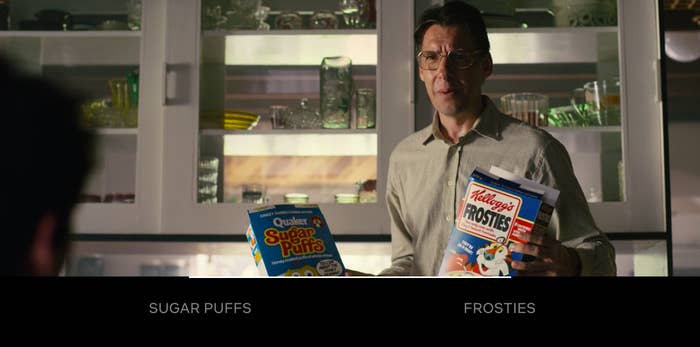
Charlie Brooker: It's really panicked people. It's quite a tricky choice, I suppose, because they’re both similar unhealthy cereals because they're covered in sugar. Also, I think it's mainly because it's a shock that it comes right near the start and people weren't quite ready and they're like, “Arghhh really am I supposed to make choices?! Oh shit!”
And the time doesn't feel very long. By the time you're chopping up bodies you're conditioned to it. You're like, “Fine, fuck it, hack him up. I don't give a fuck.”
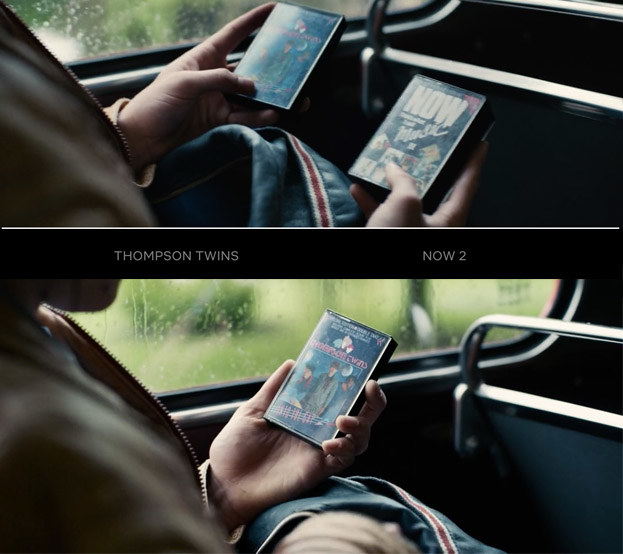
A core strength of the film is the seamless transitions that play every time you’ve made a choice: The action continues uninterrupted. Achieving this effect took a lot of work.
CB: There was a slight gap. And that was something we were keen from the start to eliminate if we possibly could. There were technical restrictions: how long you had to have video playing before there was a choice; how long the choice section lasted. Originally they were saying, “There will be a slight gap on some devices.”
As time went on, they [Netflix] refined it and refined it until it is now at the point where it is now, basically, completely seamless. They've been amazing because they developed the technology at the same time as doing the story.
Annabel Jones: They did it just in time.
CB: I'm shocked by how seamless it was. We were not in Britain, we were shooting another episode, and they had given us access to a preview account so we could look at an early version of it functioning on the platform. I was looking at it using a Roku stick or something on a hotel TV on hotel Wi-Fi and I thought “This is going to be buffering” and it worked seamlessly. And I was like, “Oh my god.”

But as the choose-your-own-adventure technology was being developed at the same time as Bandersnatch was in production, the cast had to imagine how it would all work out.
FW: There were no demos that we could try out. The whole thing was being figured out as we were filming, which meant we had to trust that it would work. But it was still very hard for me to imagine it, just because it hadn’t even been done before. I was trying to picture it in my head and I could never get a firm grasp of it.
Brooker and Jones developed flowcharts to plan the different storylines. A Netflix featurette shows how complex these plotlines were, and the main impression you get from watching it is how stressful it was.
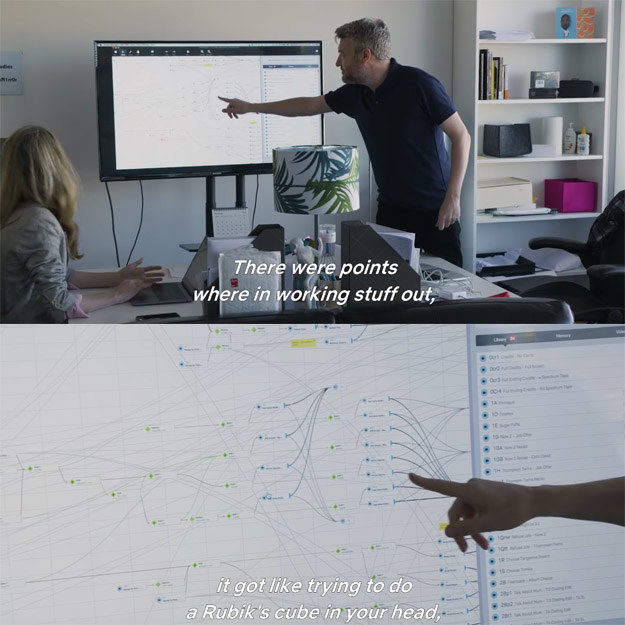
AJ: It was!
CB: It was, but it is reflected in the story. We had this central idea of somebody who becomes aware they are being controlled by you, the viewer, but then it all started expanding from there. There’s a bit in the episode where you see the Branch Manager tool that was used for the edit — Pearl Ritman is using that — and there’s shots of our actual flowchart at one point.
Here is the ending Brooker is talking about. We flash-forward to the current day to see Pearl Ritman (played by Laura Evelyn), another coder, struggling with the format of a choose-your-own-adventure story.
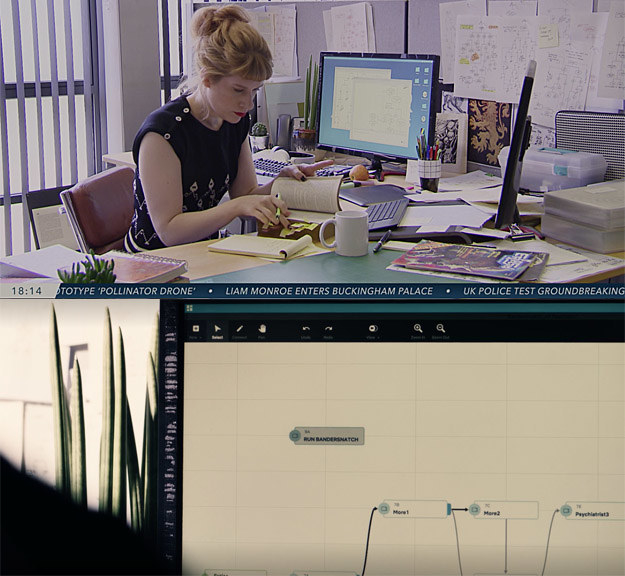
BuzzFeed: Was that written as a result of the stress from writing? Did you think: We’ve got to make a meta-joke about this?
CB: Partly, because we always knew it was about someone going mad trying to convert this incredibly complicated thing into a game.
In fact, the entire Frosties vs Sugar Puffs option at the very start was written as a sort of pisstake of the whole choose-your-own-adventure format.
CB: That is what you think interactive videos are going to be like, somebody going, “Is it going to be this door, or this door? Which one is it going to be?”
We were keen so that it carries on beyond that point, that people carry on talking, the edit carries on going, it keeps cutting from camera to camera when you are making a choice, so it doesn't feel like everything stops and it is waiting around for you.
I was worried to start with thinking, Oh, is 10 seconds going to feel like forever? If you count that in your head, 10 seconds is a long time.
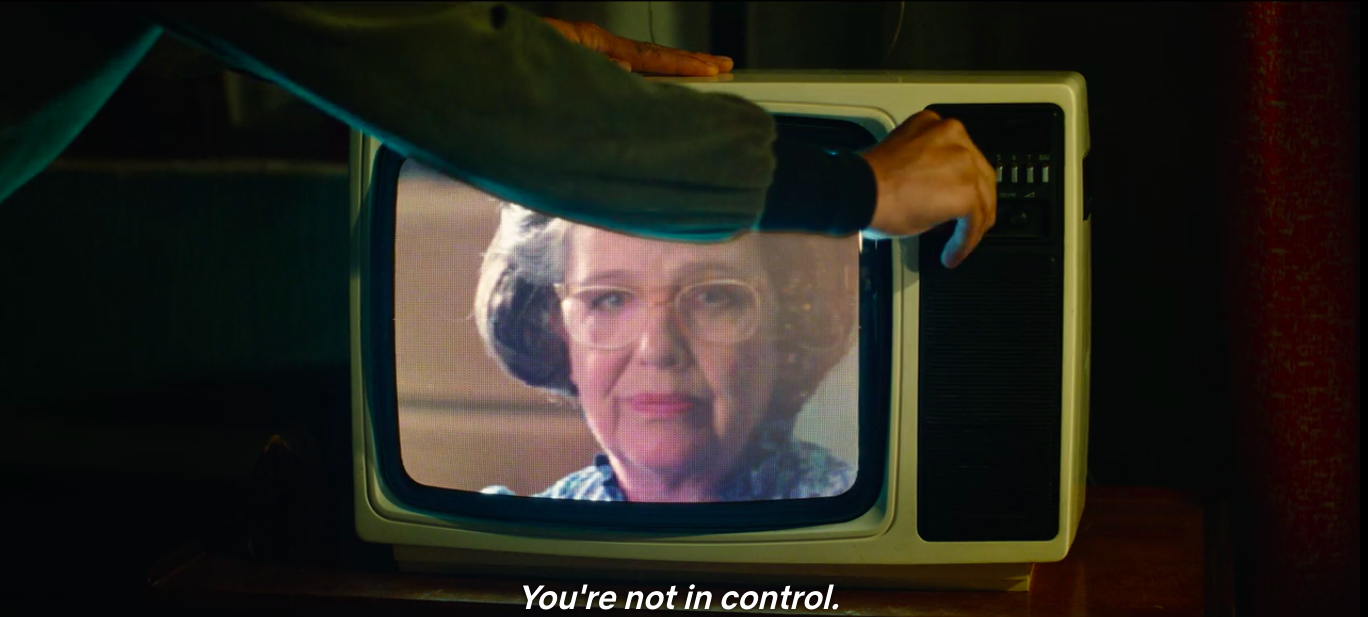
Brooker used Twine, an open-source tool that allows the reader to flick between pages like a choose-your-own-adventure book, to develop the scripts.
Will Poulter: It kind of allows you to experience the reading of the script in the sort of way the viewer might experience the film.
FW: You click and it takes you to that choice and you can play it, or you can just keep scrolling and read it as a script, but it doesn't make sense.
WP: Me and Asim [Chaudhry, who plays Mohan Tucker] were laughing because we were the two idiots who read it in standard PDF format, which is not the best way to navigate that story. It takes a long time. It's kind of hard to really get a handle on what the story is if you read it in that format.
We were given the opportunity to read a Twine document. And then it started to make real sense, or at least as much sense as this kind of thing can make. I was so excited by it.
CB: I had to learn to use this Twine programme language to write this sort of storyline. I kept saying to Annabel, “This is — fuck — hurting my head, this is going a bit mental.” There were points where I was supposed to be simplifying it, I would accidentally end up adding whole chunks of stuff. And then when you get beyond that point and then when more people are getting involved — there was a point when everyone had a moment of vertigo.
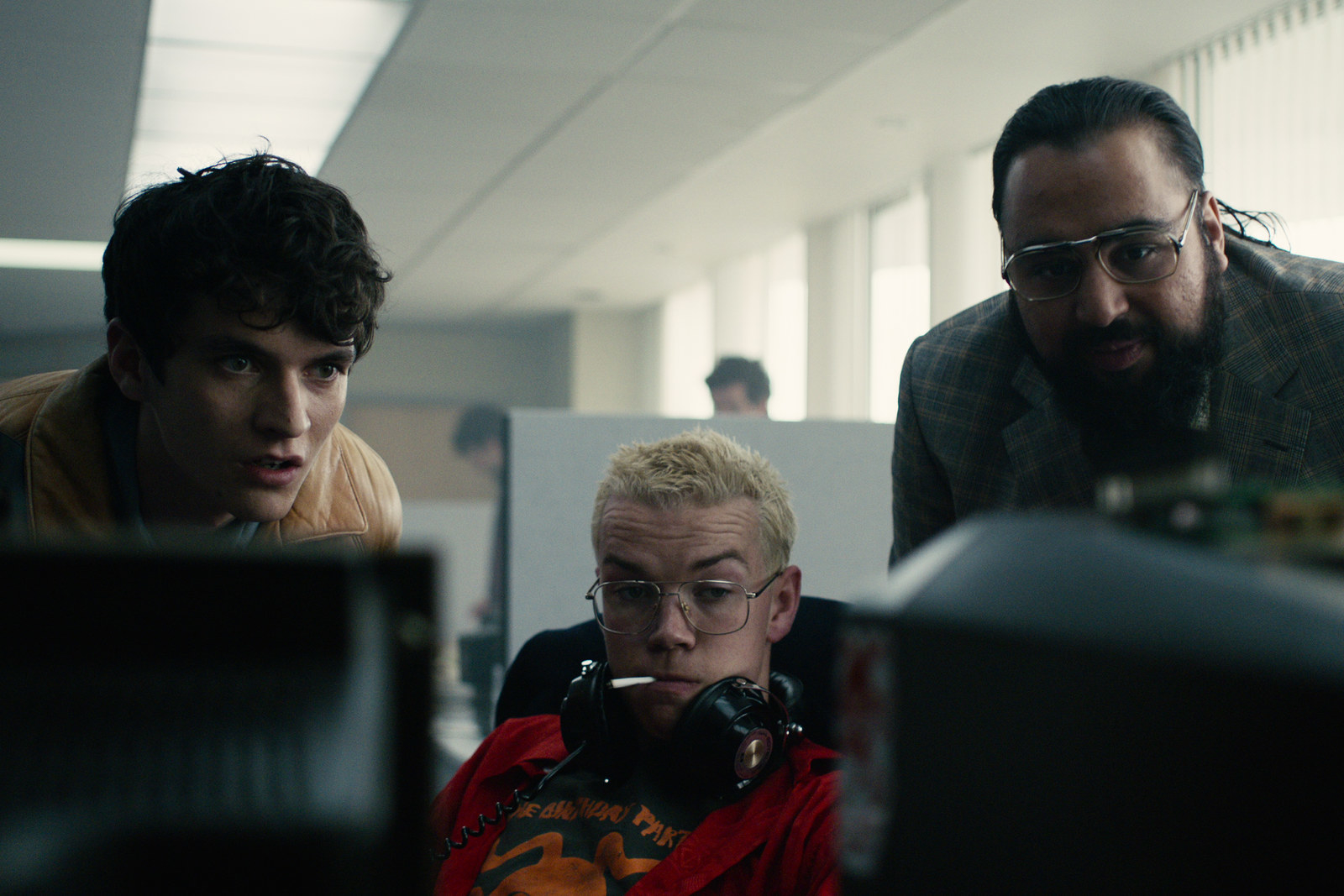
And the filming, featuring different character arcs, not necessarily in the right order, was rather discombobulating.
FW: There were definitely times on set where I was so lost, because of the amount we were getting through and the complexity of the shoot, that I would have to put my faith in the people around me.
WP: I was not afraid to say “What the hell is going on?” and I often did. One of the best things that I'm most grateful to David Slade, the director, for is the fact that he would often remind us at the most stressful period of the day, the toughest times in the shooting process, this is the first time that anyone has ever done this, like, have a bit of self-compassion. You know, just take it easy on yourself and be patient with yourself and one-another because this shit's not easy.
FW: Because of the time constraints, we had a lot of dialogue to shoot per day, but often pages would be given to us on the day that hadn’t been in the preliminary call sheet. We would have to do our best to learn it. It was definitely a challenge.
WP: I get head-scrambled trying to manage a single character arc whilst shooting out of continuity, but managing multiple, accommodating all of these different choices and audience experiences and impressions of your character up until the point that you are shooting, and all of the various impressions of your character thereafter, meant that I often found it really very difficult. But the fact that we were in the same boat helped.
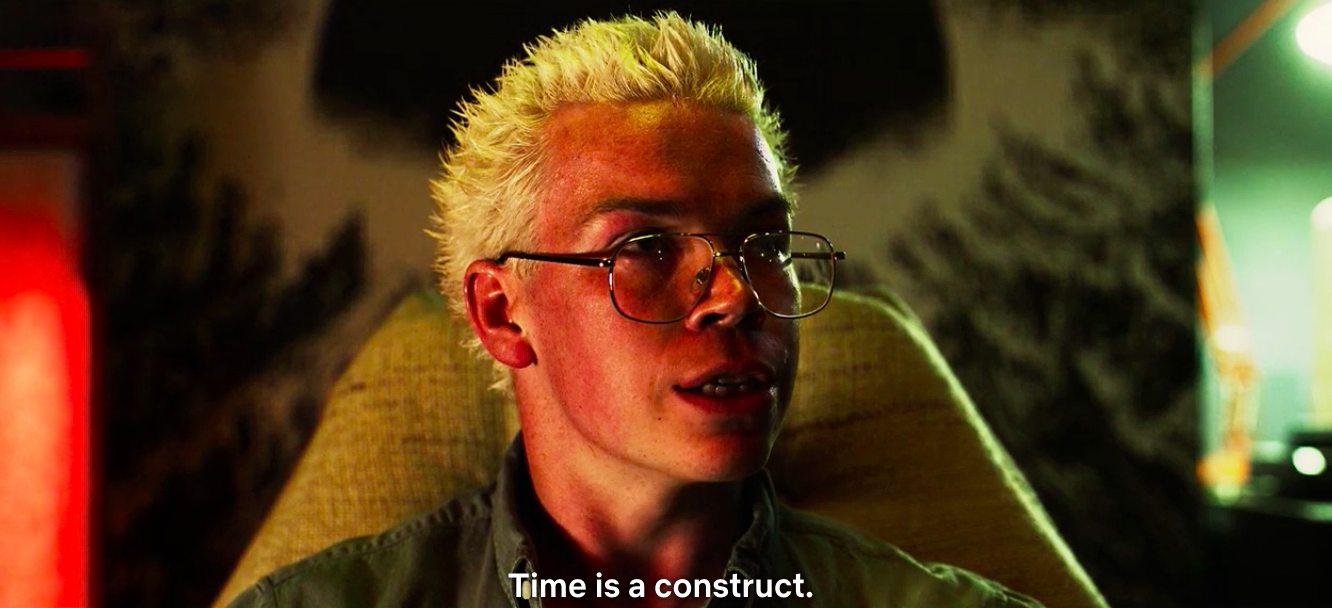

Stefan and Colin’s relationship is integral to the plot, so it’s quite surprising that not long after it begins, you’re made to pick which one of them jumps off a balcony. And then when you choose, one of them dies.
CB: It was always our intention that you would suddenly feel oh god, this is a horrible, horrible choice he's given.
Originally, Colin was going to give you this download of information, and then he just jumps out of the window. But then I thought, Oh hang on a minute, why am I wasting that opportunity? Let’s give that to you at home and make you do it.
FW: I think it’s a good thing that you give the audience an almost moral responsibility, because whenever you make a decision which is inherently very violent, you are faced immediately with the consequences of that action within the story. It’s an interesting way of forcing the viewer and audience to really think about how their actions can affect the story.
The film is full of subtle references to other Black Mirror episodes, from the news ticker with headlines such as “Former PM Michael Callow wins Celebrity Bake Off” (a reference to the episode “The National Anthem”) to the White Bear symbol appearing when Stefan starts to lose it.
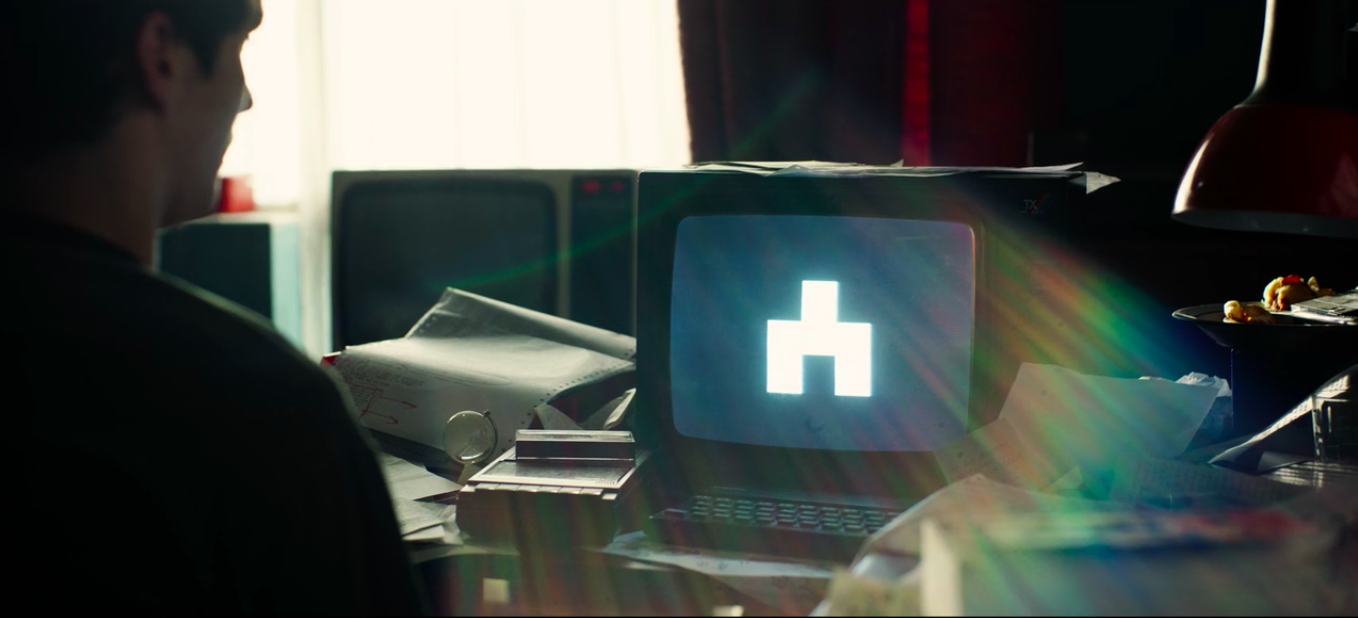
CB: The White Bear symbol came really early on. Literally we had drawn a flowchart and I was like, oh fuck, we've got to put that in, that's like fate.
And then Tuckersoft: We need a name for this software company. What is the name of the software? It's TCKR in San Junipero. Let's just call it Tuckersoft. It saves me some energy going, “What are they called?”
AJ: For people who don't know the connection, it's just a name, so why not?
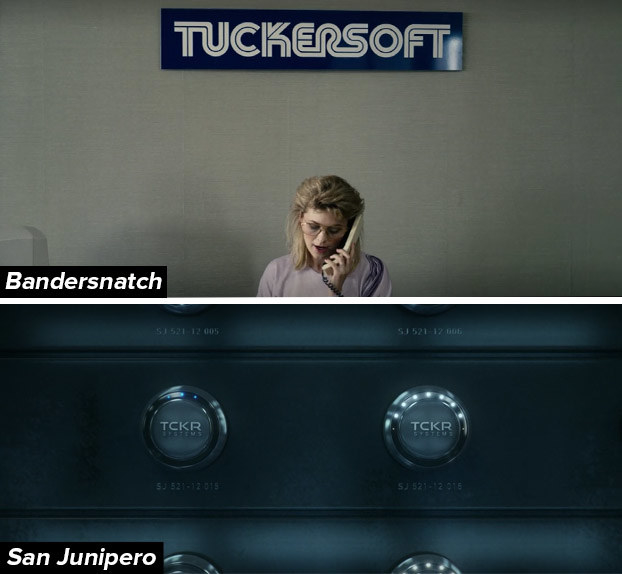
CB: Wonderfully, what we've managed to do — because people would always say “Oh, is Black Mirror one universe?” and blah blah blah, and “yeah and no” was always our answer. And now the answer is yes and no...
AJ: Yes, if it makes us clever!
CB: Yes, if it makes us look clever. And also Colin Ritman, who is clearly the god of the Black Mirror multiverse, says there are many timelines, so it's whatever we bloody want it to be, frankly.
WP: My brother texted me and he was like, “Mate, I don't know if it the art department making a mistake...” and I thought, The art department is amazing, so there’s no chance. He was like, “I don't know whether it is an indication that Colin is a time-traveller, but you've got a poster in your apartment that's from 1986 and isn't this episode set in 1984?” and I was like, “Yep. You've nailed it. That's exactly why it is there.”
One of the most mind-bending moments of the film is the “yes” vs “fuck yeah” sequence. You at home are given the option to press a Netflix logo, and Stefan’s computer tells him that he is being controlled by the streaming service. In a couple of minutes everything escalates dramatically to a ridiculous fight scene between him and Dr Haynes (Alice Lowe) — and, depending on which option you choose, his dad as well.
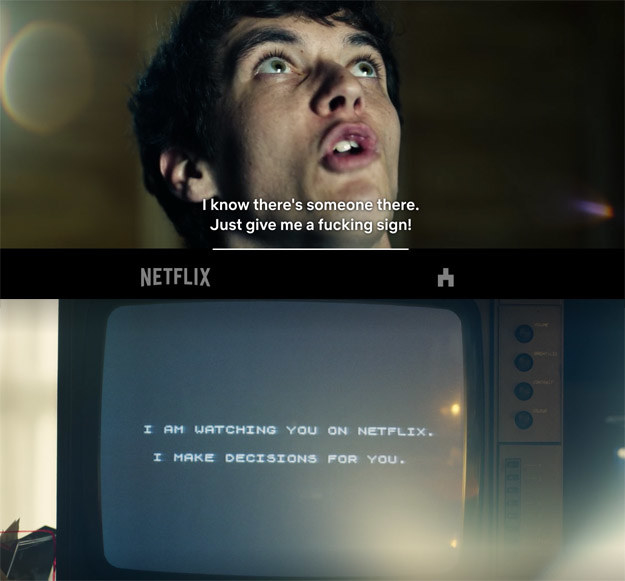
CB: We [Brooker and Jones] had a conversation where we had gone “So he becomes aware that you're there” and I went “It would be funny, wouldn't it, if literally you had told me the truth, he's in the past and you've literally said it's Netflix” because he would sound mad if he was trying to tell anyone that, and the more he asked you about it the more mad he’d sound.
“You are from the 21st century?” If he is telling anyone that, they are going to think he’s a crazy person.
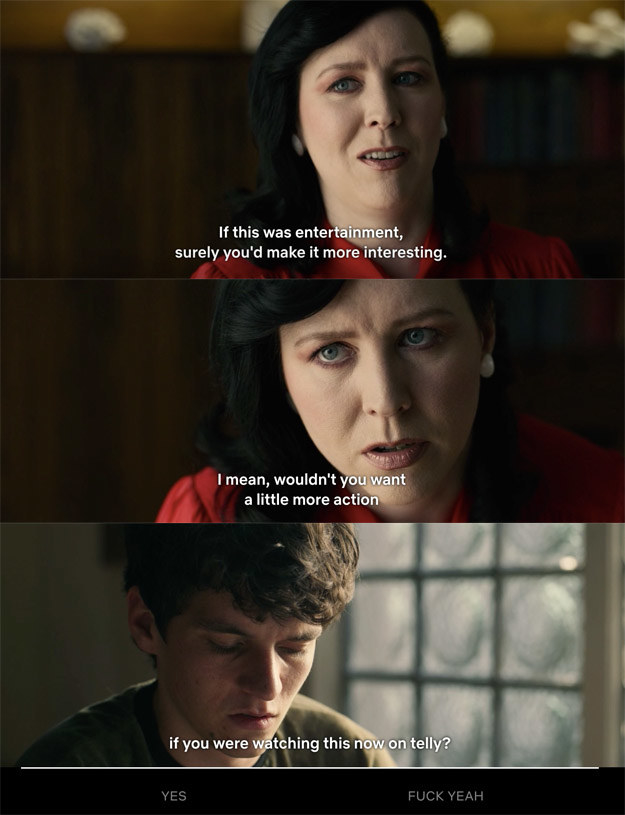
But then I was like, you can't really do that because it is so silly it would just have to be a comedy after that point. And at some point I realised, oh yeah, you can do it in this. Let's do it. That was more hidden away, that storyline originally. You had to go through to the end to get it, but we unlocked it earlier on, because sort of it was too fun to miss.
AJ: It's funny how many real-life conversations were put into the script. So the Alice Lowe scenario, when she is saying, “So let me get this straight, this is the 21st century, but wouldn't it be more entertaining than this?” That was some of our conversations we were having going. But if we introduced that, would Netflix be doing this sort of film?
CB: “Should we have a fight sequence?”
FW: It was so meta that it was quite mind-baffling. The fight sequence was a struggle purely because it was like doing a dance. You had to remember what to do when, and if you did anything wrong you could get really hurt — or someone else could get hurt.
WP: Fionn's fantastic in it. That's just a classic example of where I could disappear down one of the tributaries of this crazy rabbit hole and just enjoy it without having to watch myself.
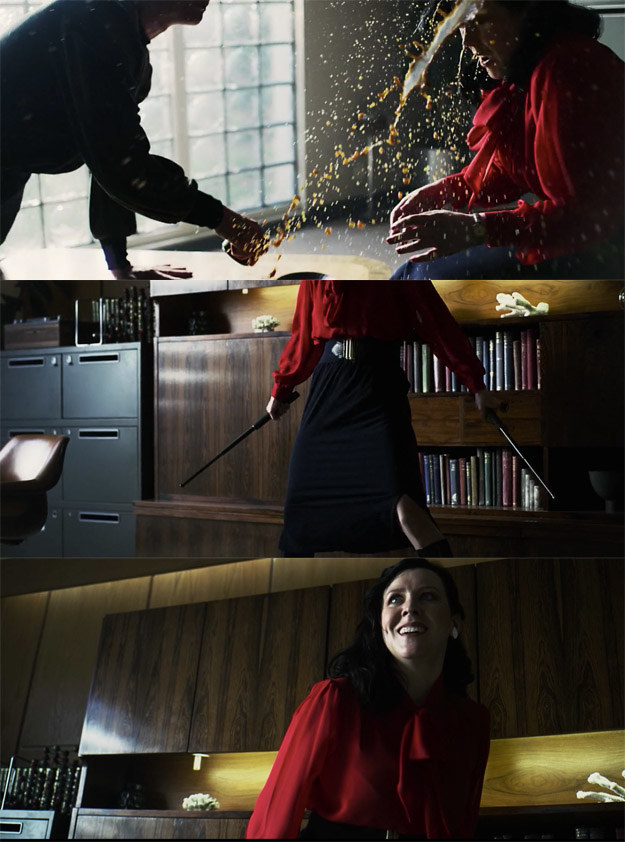
With none of the endings being a preferred outcome, the creators wanted each one to feel different.
CB: We wanted them to feel like different styles of Black Mirror ending, in a way. So there's a crazy meta twist ending whereby he realises that he is an actor, there's the very emotive one where he dies on the train, then you've got the Pearl Ritman ending where it flashes forward, and you’ve got other slightly dark and ironic endings with Kitty coming round, or Tucker coming round or whatever.
BuzzFeed: For Stefan, they're all bad endings, pretty much.
CB: [laughs] Some are less bad than others.
AJ: He gets reunited with his mother in one story, even though it ends in him dying.
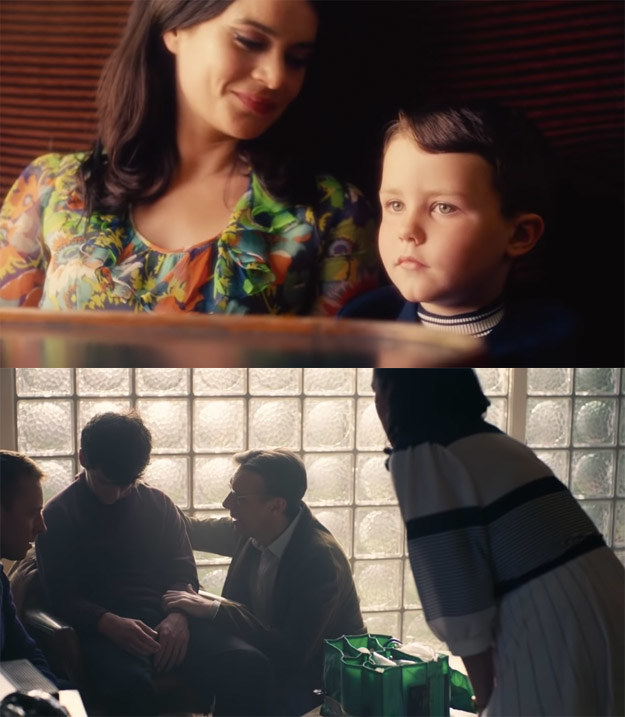
CB: We don't show the train crashing...
[Brooker pauses for several seconds]
But he does die, doesn't he?
AJ: Because he has chosen to be reunited.
CB: Bittersweet.
AJ: But it's Black Mirror I suppose, in a way. It would have felt forced to have done a happy ending because he's tormented. What can make him happy?
FW: I think they are all pretty dire. I think all the endings are very bleak, which I am not averse to, because it fits in with the Black Mirror world.
But the ending that I prefer, I love the most, is the meta one where it zooms out and it's a film set, just purely for the writing, because that's one of the ones I remember reading when I read the script for the first time and just thinking, What?
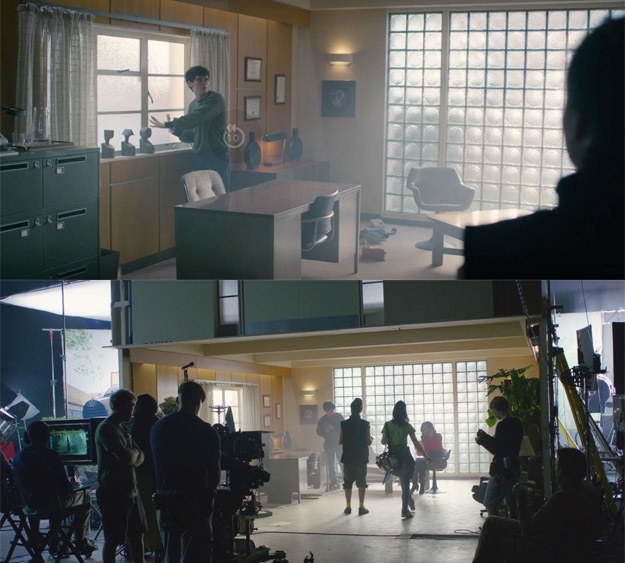
CB: It is interesting that some people have gone to it from a gaming type of perspective and have thought, I should be able to beat this, I should be able to win by getting 100% completion, which means getting 5 out of 5 and him being OK, and we haven't made that possible. Sorry, we weren't thinking in terms of that.
And the weirdest thing of all? Because of an alteration made during the editing process, there’s an ending that nobody can watch — not even the creators themselves.
CB: I think they've found everything. There's one bit you can't get to, which weirdly somebody somehow managed to find somehow and put on YouTube. There's one scene that you can't get to, because of something we changed.
We did the mix and the grade and everything for it, so it's there. It's partly technically because of the way it works. It's one long timeline and it jumps to a point in the timecode depending on what choice you have made.
AJ: We were probably just simplifying the structure slightly and it cut off that.
CB: We were simplifying some things. There was a section where Stefan meets Colin for a third time, it's just a very short alternate version of a scene. There's a glimpse of it in one of the recap things.
There's still some very little Easter Eggs that very few people have stumbled across. And one of my favourite ones is where Colin skips to the next bit.
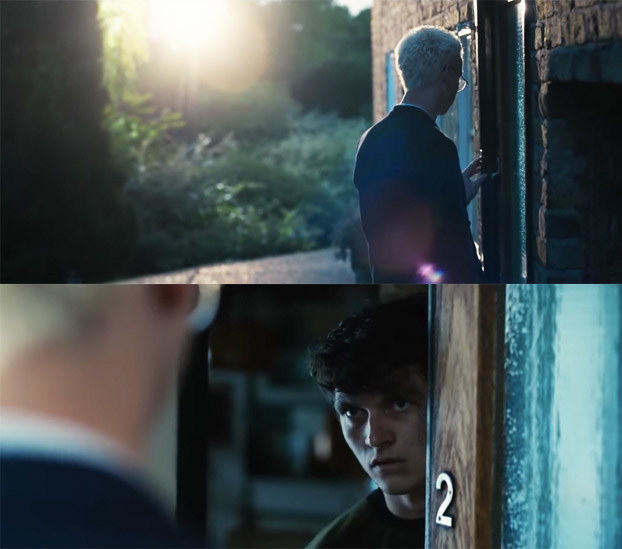
The whole thing has been seen, by critics, by audiences, and by Netflix itself, as an experiment. So, having been through all of that, what advice would they give to anyone else attempting a choose-your-own-adventure style television show or film?
CB: The central problem is: “Who is your central character?” Because when you’re writing a script, the character is defined by what they do [in that script]. But if you’re ceding that control to the viewer, then you’ve got a problem unless you can factor that into your story somehow.
FW: It’s really hard and requires a lot of focus and an amazing crew and team. It takes time — which is something we didn’t quite realise at first — but you are essentially shooting multiple different narratives and multiple different stories.
WP: I’m well aware that not every actor will struggle as much as I did, but I will say it’s a massive undertaking from a mental energy perspective. One day of work on Bandersnatch felt like five days of work, and that’s because we were shooting five different versions. It takes a lot of emotional energy and concentration and thoughtfulness around how you are going to construct the character — potentially more than you have ever experienced before.
It feels like a game but just on the final level. It's the boss level.
Bandersnatch is available to watch on Netflix.
Will Poulter and Fionn Whitehead were interviewed separately. Charlie Brooker and Annabel Whitehead were interviewed together. Some responses have been edited for length and clarity.
